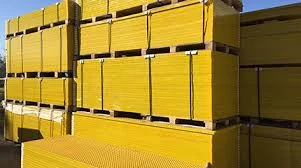
-
 Afrikaans
Afrikaans -
 Albanian
Albanian -
 Amharic
Amharic -
 Arabic
Arabic -
 Armenian
Armenian -
 Azerbaijani
Azerbaijani -
 Basque
Basque -
 Belarusian
Belarusian -
 Bengali
Bengali -
 Bosnian
Bosnian -
 Bulgarian
Bulgarian -
 Catalan
Catalan -
 Cebuano
Cebuano -
 China
China -
 China (Taiwan)
China (Taiwan) -
 Corsican
Corsican -
 Croatian
Croatian -
 Czech
Czech -
 Danish
Danish -
 Dutch
Dutch -
 English
English -
 Esperanto
Esperanto -
 Estonian
Estonian -
 Finnish
Finnish -
 French
French -
 Frisian
Frisian -
 Galician
Galician -
 Georgian
Georgian -
 German
German -
 Greek
Greek -
 Gujarati
Gujarati -
 Haitian Creole
Haitian Creole -
 hausa
hausa -
 hawaiian
hawaiian -
 Hebrew
Hebrew -
 Hindi
Hindi -
 Miao
Miao -
 Hungarian
Hungarian -
 Icelandic
Icelandic -
 igbo
igbo -
 Indonesian
Indonesian -
 irish
irish -
 Italian
Italian -
 Japanese
Japanese -
 Javanese
Javanese -
 Kannada
Kannada -
 kazakh
kazakh -
 Khmer
Khmer -
 Rwandese
Rwandese -
 Korean
Korean -
 Kurdish
Kurdish -
 Kyrgyz
Kyrgyz -
 Lao
Lao -
 Latin
Latin -
 Latvian
Latvian -
 Lithuanian
Lithuanian -
 Luxembourgish
Luxembourgish -
 Macedonian
Macedonian -
 Malgashi
Malgashi -
 Malay
Malay -
 Malayalam
Malayalam -
 Maltese
Maltese -
 Maori
Maori -
 Marathi
Marathi -
 Mongolian
Mongolian -
 Myanmar
Myanmar -
 Nepali
Nepali -
 Norwegian
Norwegian -
 Norwegian
Norwegian -
 Occitan
Occitan -
 Pashto
Pashto -
 Persian
Persian -
 Polish
Polish -
 Portuguese
Portuguese -
 Punjabi
Punjabi -
 Romanian
Romanian -
 Russian
Russian -
 Samoan
Samoan -
 Scottish Gaelic
Scottish Gaelic -
 Serbian
Serbian -
 Sesotho
Sesotho -
 Shona
Shona -
 Sindhi
Sindhi -
 Sinhala
Sinhala -
 Slovak
Slovak -
 Slovenian
Slovenian -
 Somali
Somali -
 Spanish
Spanish -
 Sundanese
Sundanese -
 Swahili
Swahili -
 Swedish
Swedish -
 Tagalog
Tagalog -
 Tajik
Tajik -
 Tamil
Tamil -
 Tatar
Tatar -
 Telugu
Telugu -
 Thai
Thai -
 Turkish
Turkish -
 Turkmen
Turkmen -
 Ukrainian
Ukrainian -
 Urdu
Urdu -
 Uighur
Uighur -
 Uzbek
Uzbek -
 Vietnamese
Vietnamese -
 Welsh
Welsh -
 Bantu
Bantu -
 Yiddish
Yiddish -
 Yoruba
Yoruba -
 Zulu
Zulu
anchoring, drilling rods, and bits for efficient and precise ...
Anchoring, Drilling Rods, and Bits for Efficient and Precise Operations
In the field of construction, mining, and geotechnical engineering, the importance of employing the right tools and techniques cannot be overstated. Among these tools, anchoring systems, drilling rods, and bits are vital for ensuring efficiency and precision in operations. These components work together to create stable foundations, facilitate resource extraction, and enable detailed subsurface exploration.
Anchoring systems provide the necessary support to structures by securing them firmly into the ground. This is particularly crucial in areas prone to natural disasters such as earthquakes or landslides. Modern anchoring techniques often involve the use of high-strength materials that not only enhance stability but also offer resilience against environmental stresses. These systems can be customized to suit specific site conditions, ensuring that they can withstand varying soil types and load requirements.
Drilling rods play a pivotal role in the drilling process. They connect the drill bit to the drilling rig and transmit the necessary torque and axial force to achieve precise and efficient drilling. The choice of drilling rods varies depending on the depth of drilling, type of soil, and the specific requirements of the project. High-quality drilling rods made from durable materials can significantly reduce wear and tear, thereby extending their lifespan and improving productivity.
anchoring, drilling rods, and bits for efficient and precise ...

The drill bits themselves are one of the most critical components in the drilling operation. They come in various shapes and sizes, each designed for specific purposes. For instance, diamond-tipped bits are used for cutting through hard rock, while carbide-tipped bits are effective for softer soil and sediment. The efficiency and precision of the drilling process largely depend on the appropriate selection of drill bits tailored to the geological conditions encountered during operations.
To achieve optimal results, it is essential to integrate advanced technologies in anchoring, drilling rods, and bits. Automated systems and sensor technologies can help monitor and adjust drilling parameters in real-time, maximizing efficiency while minimizing the risk of errors. Additionally, adopting a systematic approach to planning and executing drilling operations can lead to more precise outcomes, reducing time and costs associated with rework.
In conclusion, anchoring, drilling rods, and drill bits are indispensable tools in various engineering and construction projects. Their efficient and precise use not only ensures structural integrity but also enhances the overall quality of work. As technology continues to evolve, the synergy between these components will further improve operational effectiveness, paving the way for safer and more sustainable practices in the industry.









